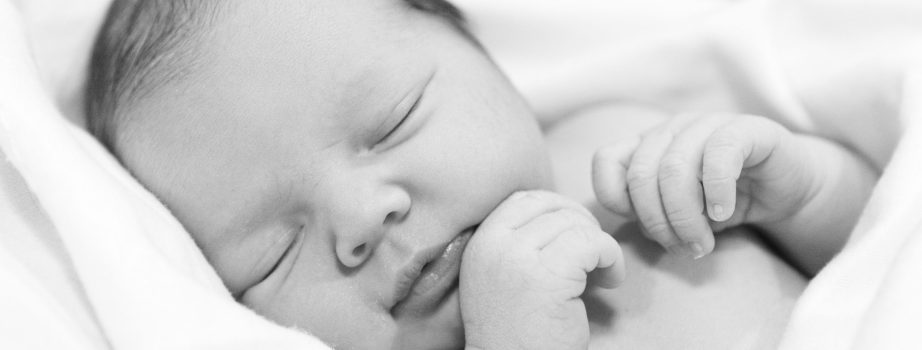At 1:50 a.m., this morning I woke Sonya up to feed. I know you are never supposed to wake a sleeping baby, but today was an exception. Today was Sonya’s surgery to receive bilateral cochlear implants at NYU, and she was not allowed to consume anything after 2 a.m. As I held her in my arms, I sang to her and promised her that everything would be okay. The calmer I was the calmer she would be. “Put your oxygen mask on first, before assisting others,” I repeated this mantra to myself.
We arrived at the hospital at 5:45 a.m. Sonya was to check in by 6 a.m. to ensure that she would go first (barring any unexpected surgeries). The entire process was seamless. We only had to wait 10 minutes before we were brought into triage. There we dressed Sonya in her hospital gown (the CUTEST thing ever!) and were greeted by a number of nurses as well as our anesthesiologist.
Our anesthesiologist in particular made me feel at ease. She had been working with our surgeon, Dr. Roland, for more than 15 years. She reviewed Sonya’s file. Asked some questions and then walked us through the process of putting Sonya under. Her tone was direct but also caring. She kept stopping to gush at how cute Sonya looked.
Before we knew it, it was time to go. I sat in a wheel chair with Sonya in my arms as they wheeled us up to the surgical floor. Yan walked beside us. A nurse parked us behind a traffic jam of five other patients also waiting for surgery. Holding Sonya close I repeated my mantra while caressing her hand. I did everything in my power to remain calm. She looked at me and then at the lights above us. Way too soon a nurse asked me for Sonya. I stood up from the wheelchair and gave Sonya a quick kiss on the nose before turning away. I figured lingering would only make things worse. I heard no cry from her. It is possible she cried later, but I believe she remained calm as the nurse carried her into the operating room. A knot of anxiety tightened in my chest.
I suddenly felt light-headed so Yan and I went down to the cafe to have breakfast. I ordered a blueberry muffin and a coffee. We sat in the lounge area and talked about how well Sonya behaved so far. How proud we were. How adorable her hospital gown was…I wondered if we could we buy it after the fact? When we finally went back upstairs a nurse approached us.
Sonya is doing fine, she told us. The doctor did have issues with her IV. She is a chubby little thing – but the IV is in after about 30 minutes of trying. The surgery just started.
Yan squeezed my hand and looked at me with a grimace on his face. I knew what he was thinking. Our poor baby being had surely been poked numerous times by a needle. But I decided to keep things positive. “If that is her only complication – I’ll take it!”
Just an hour later and Dr. Roland himself came into the waiting room. I stood up and he gave us a two thumbs up sign of relief and signaled us to follow him back into a private room. Sonya was indeed fine. Everything went very well. We would see her very soon. I felt as if a huge weight had been lifted off my chest. I felt light and so very thankful.
About 30 minutes later, we were told we could go see Sonya. We followed a nurse into a tiny curtained-off room. Sonya’s ears were covered in an ear-muff-like bandage. Yan said she looked like a Cheburashka – a Russian cartoon character. Sonya had awoken, but had fallen back to sleep by the time we arrived. oxygen was being blown into her face. She looked like she was having a good dream.

When she woke up an hour later, the reality of the procedure set in. Sonya was frightened and in pain. She screamed while she nursed. It was upsetting. The doctor told the nurse to give her morphine. I hesitated before allowing it, but seeing the level of pain she was obviously in, I conceded. Within a few minutes, Sonya was fast asleep. She slept a good long while before waking in a much better mood. A wonderful nurse stayed with us the entire time. She checked Sonya’s vitals consistently and answered any questions that arose. When Yan left to grab us dinner, she sat with me and we talked about the amazing things that were to come when Sonya would be able to hear.
By 8 p.m., Sonya was doing great. She was eating every couple of hours and was pooping and peeing. All good signs. Her pain was now being managed by infant Tylenol. Her vitals were good as well. We decided she was ready to come home.
Asleep in her bed, I alter between states of relief and fear that she will develop an infection. But above all, I feel grateful. We had the most phenomenal medical care. I emailed our surgeon several times over the weekend with questions and he responded each time in under 10 minutes. Amazing. With the surgery behind us, we have so much to look forward to.
















